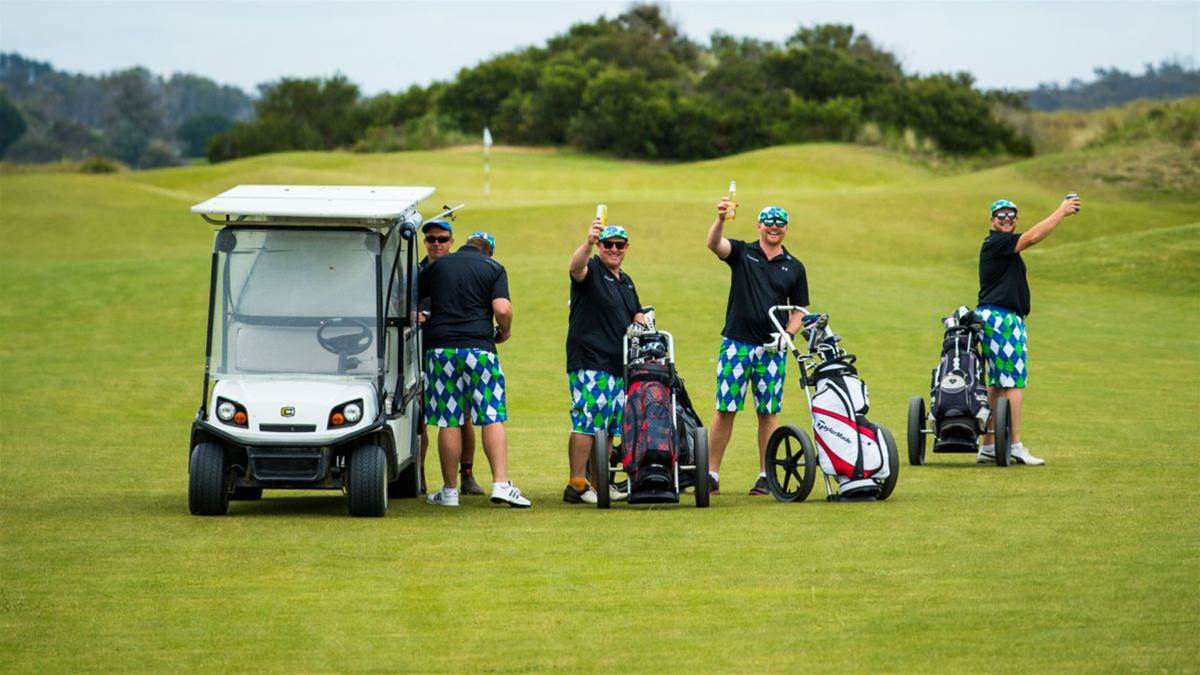Future Golf has quietly been transforming the landscape of Australian golf, creating opportunities for people who might never have picked up a club, and revitalising how clubs engage with players across the country.
Its founder, Ali Terai, had a vision from the very beginning: to make golf accessible, social and inclusive, while also giving golf clubs the tools to grow. “Future Golf is opening up new markets and driving strategic objectives for golf facilities across the country,” Terai says.
“We’re making golf more accessible. Whether you’re a social player seeking casual rounds, or an addict who lives and breathes golf, Future Golf’s membership categories have you covered.”
Terai’s story is as compelling as the company he built. Arriving in Australia at the age of
three, he grew up in a migrant household, raised by a single mother. Golf wasn’t something he had ready access to, but it became a passion through unconventional experiences - EA Sports, casual encounters with local courses, and a curiosity for the game which went beyond formal memberships or traditional club entry.
As he grew more familiar with the sport, he realised something simple but profound: if accessing golf was difficult for him, there must be countless other Australians who faced the same barriers. That insight became the foundation for Future Golf, a company built around connection, opportunity and inclusivity.
David Galbally, the company’s General Manager Marketing, explains that the early days of Future Golf were built on nothing more than ambition and a belief in social connection.
“The core idea was about getting friends together to play,” he says. Terai approached a local course to buy tee times, then advertised the opportunity on Facebook, using a modest $50 ad and a $50 voucher. That small experiment, designed simply to bring people together on the course, grew exponentially. Ten years later, Future Golf is a multi-club digital membership platform with over 43,000 members, offering a variety of membership categories, event formats and experiences across the country.
Initially branded as Gen Y Golf, the company focused on group events and appealing to younger golfers. But over time, Terai recognised the potential to broaden the brand and capture a wider audience. The rebrand to Future Golf signalled a shift in ambition: the company was no longer just for young, social golfers. It became a platform for anyone looking to play, learn, or connect with the game.

At the heart of Future Golf is a simple mission: connecting people to the game. Galbally describes the early steps as remarkable, noting the effort involved in building a network of partner courses and running events which introduced new players to the sport.
“Our ambition has always been to bring in people who wouldn’t normally enter traditional golf pathways,” he explains. Around 65-70 per cent of Future Golf members had never had a handicap before joining, highlighting the company’s success in attracting fresh faces to the game.
“Members experience a range of courses across Australia, learning the rules and formats of golf while meeting other players and forming communities around the sport.”
This approach has also generated a significant flow of new participants into traditional golf clubs. Galbally notes that while Future Golf sees a steady cycle of members moving through the program, much of this is what the company calls “good churn” - members who ultimately join traditional clubs. Over 13,000 members who started with Future Golf have gone on to join typical golf course memberships, proving the company is expanding the game rather than competing with it.
The benefits for golf clubs partnering with Future Golf are substantial. The company offers a range of strategic advantages designed to drive growth, engagement and revenue, at no cost to clubs. Firstly, there is brand visibility: courses, driving ranges, mini-golf setups, and simulators benefit from being part of the extensive Future Golf network. The platform helps clubs reach golfers they might never otherwise encounter.
Marketing collaborations provide another benefit. Clubs gain access to national marketing resources, which can be tailored to their priorities to promote their facilities and events. By leveraging Future Golf’s campaigns, clubs can increase awareness and attract new visitors without shouldering the full burden of advertising themselves.

Future Golf also plays a key role in capturing emerging golfers. Many new players do not know how to navigate the traditional pathways into golf, and the platform offers a welcoming introduction. For clubs, this represents a unique opportunity to engage with new audiences, nurturing their development into regular players.
Membership generation is another advantage. Future Golf’s investment in brand and advertising ensures a stream of leads for traditional club memberships. Galbally highlights the importance of this function: “We unlock access to the game and create opportunities for people to fall in love with golf. That inevitably benefits the clubs, as many of our members eventually transition into traditional memberships.”
Revenue growth extends beyond membership. Partnering clubs see incremental revenue through on-course spending, from food and beverage to pro shop purchases, as well as attendance at diverse event formats co-ordinated by the Future Golf team. These events, often designed with a social focus, encourage participation from both newcomers and experienced players, creating lively, engaging atmospheres.
The company’s impact on the golf landscape is evident in the way it has grown organically, yet strategically, over the past decade. Starting with that $50 Facebook ad, Future Golf now drives participation on a national scale, opening up golf to thousands of players.
Galbally emphasises the company’s community-first approach shapes every decision at Future Golf. “Ali’s vision was always about connecting people to the game. It’s not just about membership numbers; it’s about creating pathways for new players, helping them learn, meet others, and eventually find their place in the broader golf community.” The model has proven remarkably effective: Future Golf has helped thousands of people overcome the traditional barriers to golf, while simultaneously driving tangible benefits for partner clubs.
It is this dual impact - growing the game while supporting clubs - that sets Future Golf apart. By focusing on social engagement, accessibility and innovative marketing, the company has carved out a space which complements the traditional golf ecosystem rather than competing with it. Clubs gain visibility, new members and increased revenue, while players gain access, education and a sense of belonging. The result is a virtuous cycle, where more participation fuels more opportunity, which in turn drives further growth.
Terai and his team continue to explore new ways to engage players, expand networks and deliver value to partner clubs. With over 43,000 members, hundreds of courses involved and a clear focus on accessibility and community, the company is redefining what it means to participate in golf in Australia.












